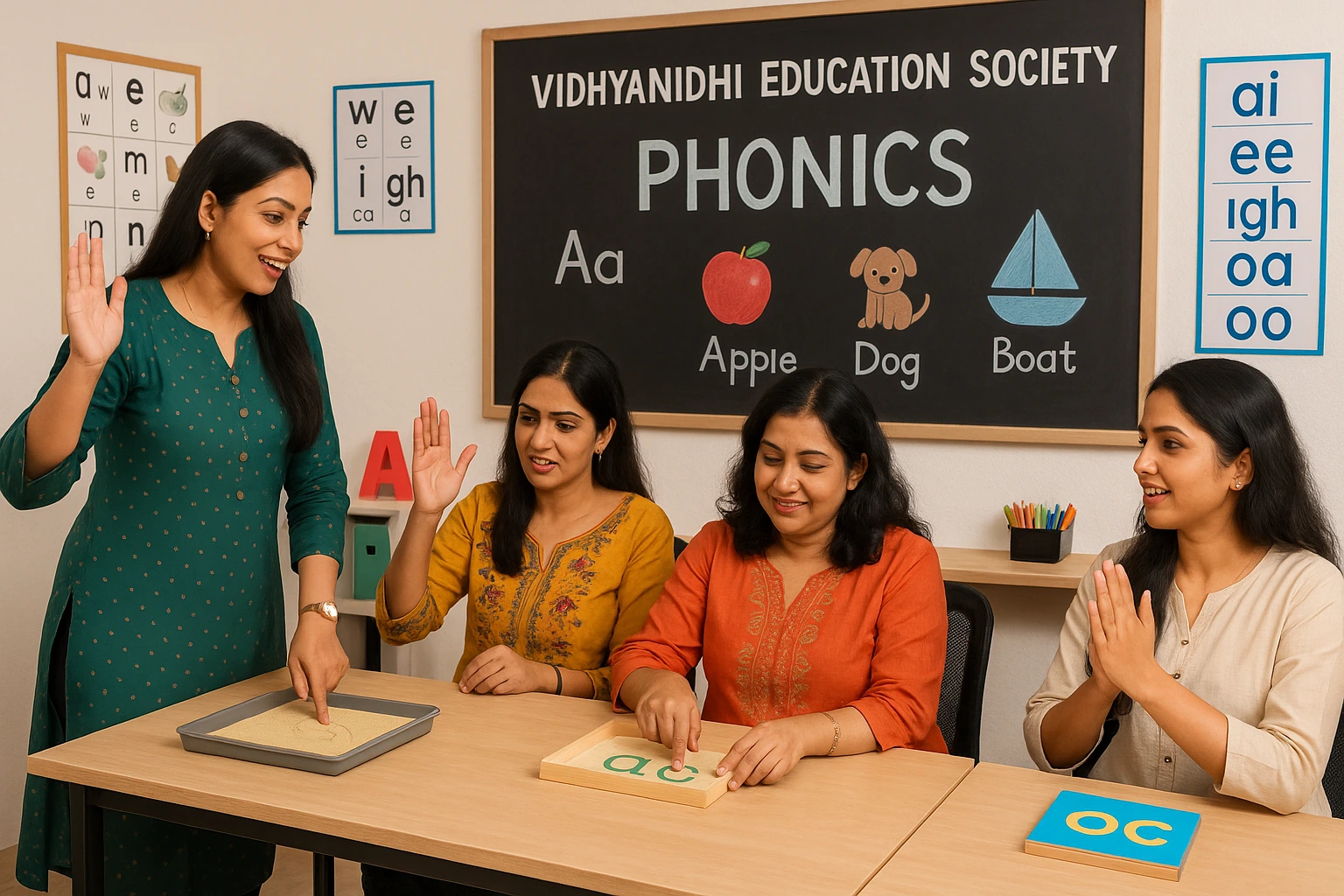What is Phonetics and Examples?
What is Phonetics and Examples?
Phonetics is the study of the sounds used for communicating and expressing. It helps us comprehend how speech sounds are constructed, sensed, and recorded. Learning about Phonetics and Examples helps enhance our accent, understand various pronunciations, and even learn untried languages more effortlessly.
Table of Content
Key Aspects of Phonetics
Phonetic is the scientific breakdown of articulated sounds. In early education and language learning, it helps learners develop robust pronunciation and listening mastery.
To Download Brochure of Phonics Course, Click Here!
For more details of Phonics Course Call / Whatsapp +919869866277/+919869546913
Here are the Key Aspects :
Articulatory
Focuses on speech sounds formed using the mouth, tongue, vocal cords, and flow of air. It examines how different positions create various sounds.
Acoustic
Revolves around the physical characteristics of sound waves- frequency, amplitude, and timespan. This branch helps analyze sound patterns through visual tools.
Auditory
Analyzes the sensing and processing of sounds by the human ear. Understanding this helps tailor instruction methodology for clearer sound discrimination.
Allophones and Phonemes
Allophones are interpretations of sounds based on context. Phonemes are the fundamental elements of sound in a language.
Phonetic Signs
Uses characters of the International Phonetic Alphabet to denote precise speech sounds.
A command over helps educators and learners achieve a profound insight into sounds, correct enunciation, and effective communication in any language.
How do you Introduce Phonetics?
Teaching these can be made comfortable and engaging by integrating precise, clear steps. It’s essential to focus on how sounds function in speech, not just how letters emerge on a page.
Here’s how you Introduce systematically:
Introduction
Introduce that Phonetic revolves not merely around the letters we notice, but also around the sounds we hear and enunciate. Multiple sounds sound different in distinct words.
Teach phonemes
Familiarize learners with the fact that phonemes are the elementary units of sound. For example, the word hop has three phonemes: /h/, /ɒ/, and /p/.
Connect phonemes to letters
Use simple examples like pot or cup to show how letters associate with sounds. Then move to digraphs and consonant blends (th, ng, bl, str, etc).
Use visual resources
Exhibit photographs or flashcards with letters and their distinct sounds. Trained learners can be further acquainted with the International Phonetic Alphabet (IPA).
Pronunciation Practice
Foster reading audibly, reciting sounds, and using entertaining tongue twisters to enhance clarity.
Connect to reading and writing
Exemplify how learning sounds helps with spelling and reading words without any external guidance.
Encourage listening
Focus on listening to the right sounds in speech.
Dynamic learning
Use plays, melodies, and sound-based actions to keep learners entertained.
Understanding these elements of Phonetic using Examples supports adept speech, improved language teaching, and finer communication. Whether for educators or learners, These provides a methodical and proven approach to mastering articulated language.

Source: indiamart
Phonetics Vs. Phonics with Examples
Phonetics and phonics may sound alike, but they revolve around distinct elements of language learning. Understanding Phonetic Vs. Phonics with Examples helps learners enhance both pronunciation and reading mastery.
- Phonetic is the breakdown of the true sounds of speech.
- It revolves around the sound formation through the mouth, tongue, and vocal cords.
- Each sound is illustrated using characters, often from the International Phonetic Alphabet (IPA).
- Example: The word ship is split into /ʃ/ /ɪ/ /p/. Each sound is researched in detail, regardless of spelling.
Phonics:
- Phonics is an approach for teaching reading and writing.
- It focuses on the connection between letters and their sounds.
- Phonics enables learners to “sound out” words by identifying patterns.
- Example: In the word ship, phonics familiarizes that “sh” makes a single sound, not two.
Essential Difference:
- Phonetic revolves around sounds and their physical formation.
- Phonics is concerned with letter-sound relations used in spelling and reading.
Phonetic and Phonics both play a key role in language mastery. Phonetic helps with articulation, while phonics backs early reading and writing advancement. When used jointly, they deliver a robust foundation for conquering any language.

Examples of Phonetic in a Sentence
Phonetics helps in understanding the speech mechanics. It forms the basis of accurate enunciation, clarity, and proficiency. For educators, particularly those guiding early learners, These streamlines the process of teaching phonics. The Phonics Teacher Training Course by Vidhyanidhi Education Society provides in-depth insights into Examples of Phonetic in a Sentence and other core elements of Phonetic.
Important Aspects:
Articulation of Sounds
Concentrates on physical speech sounds production using the vocal tract. The changes in the position of the lips, tongue, and airflow create different sounds.
Phonetic Signs and Transcription
Familiarizes the use of the International Phonetic Alphabet (IPA) for explicit representation of articulated sounds, which is a key aspect of the Phonics Teacher Training Course.
Sound Categories
Covers consonants, vowels, diphthongs, and their classifications based on sound production and vocal cord activity.
Auditory Training
Guides trainees in learning how to differentiate between identical sounds and helps learners in rectifying mispronunciations.
Prosodic Elements
Includes elements that affect the natural flow and expressive tone of speech- emphasis, rhythm, and intonation.
Phonemes and Allophones
Describes how modest sound variations can transform word meaning, which is particularly important in early literacy development.
Application in Teaching
The Phonics Teacher Training Course equips educators with methods to apply phonetic understanding in classroom settings to boost reading and speaking skills using Examples of it in a Sentence.
These is not just academic; it directly influences how children embrace the language. The Phonics Teacher Training Course by Vidhyanidhi Education Society (Govt. Regd.) blends this knowledge with hands-on strategies to improve literacy outcomes.
Master Vidhyanidhi Education Society’s Phonics Course!
To Download Brochure of Phonics Course, Click Here!
For more details of Phonics Course Call / Whatsapp +919869866277/+919869546913
FAQs
How to Write a Phonetic Name?
Write a phonetic name using IPA symbols to show pronunciation clearly, like “Sarah” as /ˈsɛərə/ for accurate speech guidance.
Why do we Study Phonetics?
We study Phonetics to enhance pronunciation and streamline language teaching. Vidhyanidhi Education Society offers training through its Phonics Teacher Training Course.





